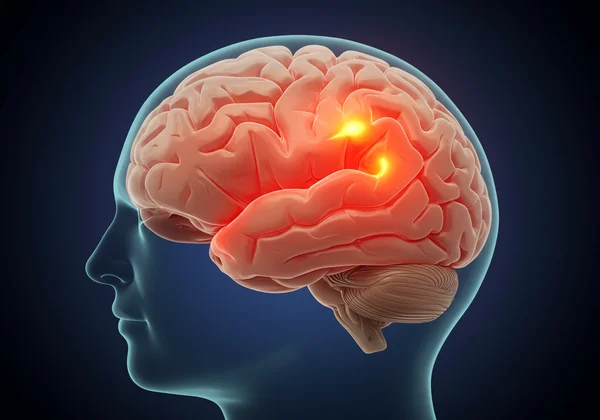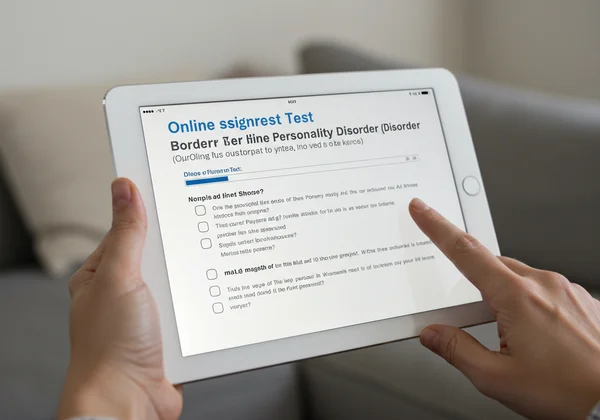BPD Rage: Triggers, Control & The Free BPD Test for Managing Intense Anger
Are you grappling with overwhelming bursts of anger, feeling like a storm rages within you with little warning? For individuals with Borderline Personality Disorder (BPD) and their loved ones, this intense anger – often called BPD rage – can feel confusing and destructive. But what triggers BPD rage? Understanding the roots of these powerful emotional surges is the critical first step toward stability and peace. Here, we'll explore what triggers these intense episodes, dive into the science behind them, and give you practical, helpful strategies to regain a sense of control. If you're seeking to better understand your symptoms, you are in the right place.

What Fuels the Fire? Common BPD Rage Triggers
Pinpointing what sparks these intense angry outbursts is often the very first, vital step in learning to manage them. BPD triggers are not always obvious; they can be subtle, complex, and deeply personal. They generally fall into three main categories.
Internal Triggers: The Inner Landscape of Distress
Often, the storm begins from within. Internal triggers are distressing thoughts, feelings, or physical sensations that can ignite a rage episode. For someone with BPD, the inner world can be a tumultuous place.
- Fear of Abandonment: A perceived slight or a minor change in plans from a loved one can activate an intense, primal fear of being left alone, which may manifest as anger.
- Feelings of Emptiness: A chronic sense of void or identitylessness can create a painful internal state where anger emerges as a way to feel something.
- Shame and Self-Criticism: Harsh self-judgment or feelings of being "broken" can build pressure until it erupts outwards as rage.
External Triggers: Navigating Environmental Stressors
The world around us can present numerous challenges that act as triggers. These are tangible events or situations in your environment that provoke a strong emotional reaction.
- Perceived Criticism or Rejection: A neutral comment from a boss or a casual remark from a friend might be interpreted as a deep personal attack, triggering a defensive and angry response.
- Stressful Life Events: High-pressure situations like financial trouble, work deadlines, or major life changes can overwhelm coping abilities, making a person more susceptible to anger.
- Invalidation: Having one's feelings dismissed or told "you're overreacting" can be profoundly triggering, as it reinforces feelings of being misunderstood.
Relational Triggers: When Interactions Spark the Storm
Relationships are often a central area of struggle for those with BPD. The very closeness that is desired can also be a source of intense triggers, making interpersonal conflict a powerful catalyst for rage.
- Misunderstandings: Small miscommunications can quickly escalate when viewed through a lens of negative expectation or past hurts.
- Setting Boundaries: A loved one setting a healthy boundary may be perceived as rejection or punishment, sparking anger and feelings of panic.
- Unmet Needs: Feeling unheard, unseen, or unsupported in a relationship can lead to frustration that boils over into rage. Recognizing these patterns is a key part of the journey, and a free BPD screening can offer initial insights.
Understanding BPD Anger: The Science Behind the Storm
The intensity of BPD anger is not a choice or a character flaw; it is rooted in neurobiology and psychological vulnerabilities. Understanding how these intense emotions work can help you be kinder to yourself and make the whole experience feel less confusing.
Emotional Dysregulation: A Core BPD Trait
At the heart of BPD is emotional dysregulation. This means experiencing emotions more intensely and for longer durations than others, with a slower return to an emotional baseline. A minor annoyance for someone else might feel like a five-alarm fire for a person with BPD. This isn't an exaggeration; it's a difference in emotional processing.
Amygdala Hijack: When Emotions Take Over
Think of the amygdala as the brain's emotional smoke detector. In individuals with BPD, this system is often hyper-reactive. When a trigger is detected, the amygdala can "hijack" the rational brain (the prefrontal cortex), flooding the system with stress hormones and activating the fight-or-flight response. This is why BPD rage can feel so sudden and uncontrollable—the emotional brain has taken the driver's seat.

The Impact of Past Trauma on Emotional Response
Many individuals with BPD have a history of trauma, neglect, or invalidation. These past experiences can hardwire the brain to be on high alert for threats. A present-day situation that remotely resembles a past trauma can trigger an outsized emotional reaction, as the brain responds to the old threat, not just the current one. Anger, in this context, often serves as a protective shield against unbearable pain.
7 Ways to Regain Control During BPD Episodes
While the experience of BPD episodes can be frightening, it's incredibly important to remember that you can learn effective skills to navigate and manage them. Recovery is not about eliminating anger but about learning to navigate it without causing harm to yourself or your relationships.
Distress Tolerance Skills: Immediate Relief for Intense Emotions
When you're in the middle of an amygdala hijack, you can't think your way out of it. You need to calm your body first. Dialectical Behavior Therapy (DBT) offers powerful TIPP skills:
-
Temperature: Splash your face with cold water or hold an ice pack to trigger the "dive response," which rapidly slows your heart rate.
-
Intense Exercise: Engage in a short burst of activity like jumping jacks or running in place to burn off adrenaline.
-
Paced Breathing: Breathe in for a count of four and out for a count of six. Longer exhales calm the nervous system.
-
Paired Muscle Relaxation: Tense and then relax your muscle groups, releasing physical tension.

Mindfulness Techniques: Staying Present and Aware
Mindfulness is the practice of observing your thoughts and feelings without judgment. Instead of being swept away by the storm of anger, you can learn to watch it from the shore. This creates a crucial space between the trigger and your reaction, giving you a chance to choose a different response.
Effective Communication: De-escalating Conflict and Expressing Needs
Often, rage erupts when needs aren't being met or communicated effectively. Learning skills like using "I feel" statements (e.g., "I feel hurt when...") instead of accusatory "You always..." statements can transform a conflict into a conversation.
Radical Acceptance: Embracing What Is
Radical acceptance doesn't mean you approve of a painful situation. It means accepting the reality of it without fighting it. When you stop fighting reality, the anger associated with that struggle can diminish, freeing up energy to focus on problem-solving or self-soothing.
Seeking Support: Leaning on Trusted Individuals and Professionals
You do not have to go through this alone. Reach out to a trusted friend, family member, or therapist. Having a designated person to call during a crisis can be a lifeline. Professional help, especially therapies like DBT, is designed to teach you the skills needed for long-term management.
Identifying Early Warning Signs and Developing a Personalized Action Plan
Pay attention to what your body and mind feel like before the rage hits. Do you get a pit in your stomach? Do your thoughts start racing? By identifying these early signs, you can create a proactive plan. For example: "When I feel my chest get tight, I will leave the room and practice paced breathing for five minutes."
Post-Episode Self-Care and Repair: Healing After the Storm
After a rage episode, it's common to feel intense shame and guilt. Practice self-compassion. Acknowledge your pain without judgment. Once you've calmed down, focus on repairing any relational damage. A sincere apology and a commitment to continue working on your skills can help rebuild trust.
Taking Control: Your Path to Managing BPD Anger
Living with BPD rage is incredibly challenging, but it is not a life sentence. By understanding your triggers, recognizing the science behind your emotions, and consistently practicing effective coping skills, you can reclaim your sense of control. Every step you take is a victory. The journey begins with understanding. If you are questioning whether your experiences align with BPD, the first step can be simple. We encourage you to take the free BPD test on our homepage as a starting point for self-exploration and a bridge to seeking professional guidance.

Frequently Asked Questions About BPD Rage and Management
What are the 9 core symptoms of Borderline Personality Disorder?
The DSM-5 lists nine criteria for BPD: frantic efforts to avoid abandonment, a pattern of unstable and intense relationships, identity disturbance, impulsivity in at least two potentially self-damaging areas, recurrent suicidal behavior or self-harm, emotional instability, chronic feelings of emptiness, inappropriate and intense anger, and transient, stress-related paranoid thoughts or severe dissociative symptoms.
Is BPD rage a permanent and uncontrollable part of the disorder?
Absolutely not. While intense anger is a common symptom, it is not permanent or uncontrollable. With effective, evidence-based treatments like Dialectical Behavior Therapy (DBT), individuals can learn skills to regulate their emotions, tolerate distress, and manage their anger effectively. Recovery is possible, and many people with BPD live full, stable, and rewarding lives.
How can someone get officially diagnosed with Borderline Personality Disorder?
An official diagnosis must be made by a qualified mental health professional, such as a psychiatrist, psychologist, or licensed clinical social worker. The process typically involves a comprehensive clinical interview and may include standardized questionnaires. An online borderline personality disorder test can be a valuable first step for self-awareness, but it's not a substitute for a professional evaluation. If you're curious, a preliminary screening can provide you with a starting point for a conversation with a professional.
Where can I find immediate help during an emotional crisis related to BPD?
If you are in immediate distress or having thoughts of harming yourself or others, please seek help immediately. You can call or text the 988 Suicide & Crisis Lifeline at any time to connect with a trained crisis counselor. You can also go to your nearest emergency room or call 911. Please remember, your safety and well-being are always the highest priority. Reach out – help is available.